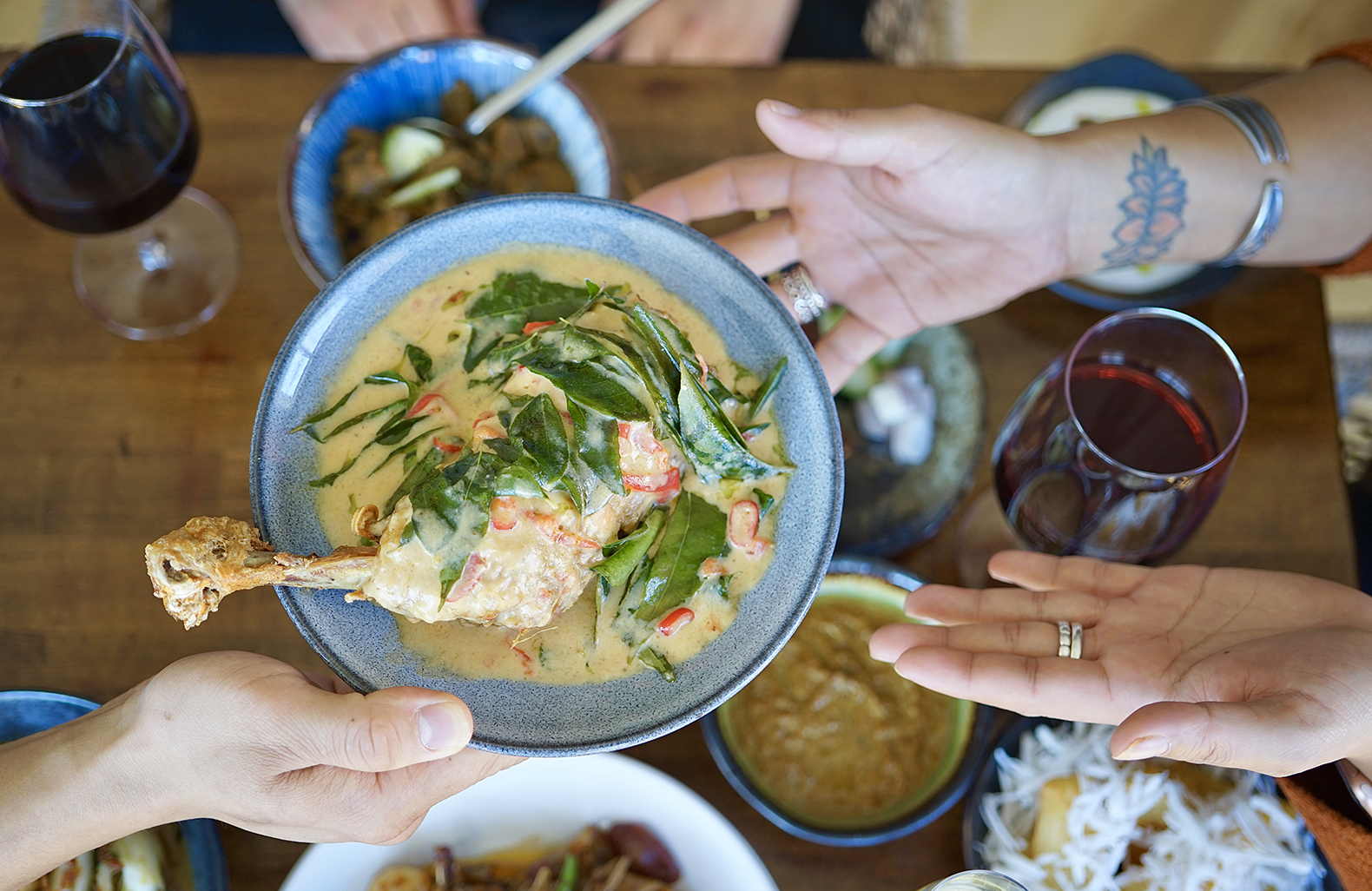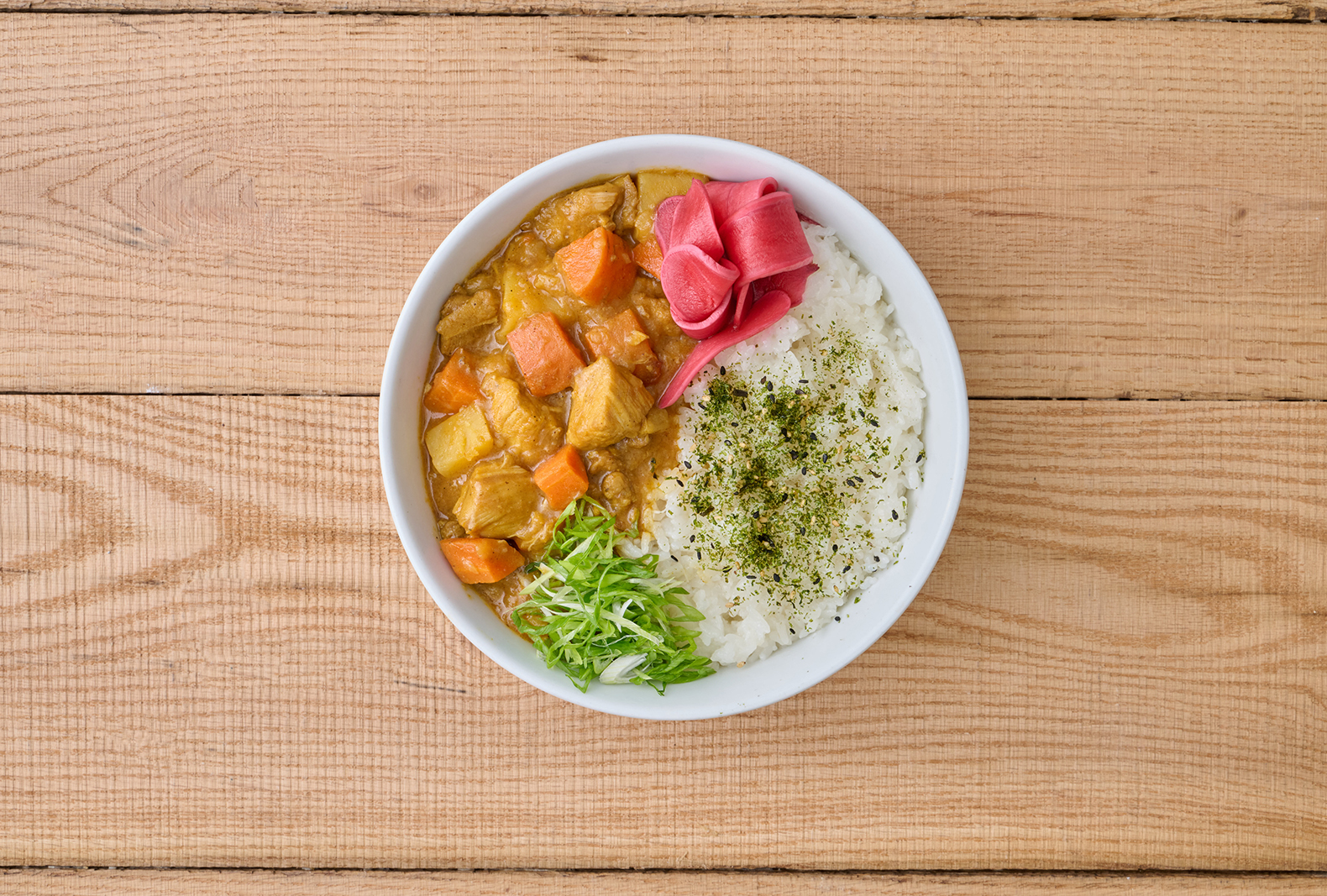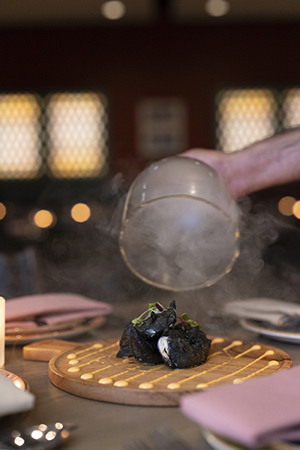The rise of the fried chicken sandwich has been well documented, but there are other trends simmering beneath that one, most notably of chicken curry.
“We’ve been tracking Indian flavors, especially in the spice realm, for around five years now,” said Alex Sadowsky, director of culinary and menu innovation for Twin Peaks Restaurants, which recently added a tikka sauce for its wings and a chicken tikka flatbread to the menu.
He said that in Florida and Texas in particular, the increase in customers from India has been notable, with a growing number of guests requesting cricket games — hugely popular in South Asia — be played on the restaurants’ televisions.
“That tied with seeing full Indian quick-service brands really booming,” he said. “We just needed to find the right vehicle for it [to add it to our menu].”
And that vehicle is chicken, which continues to be the U.S.’s favorite protein. The U.S. Department of Agriculture estimates annual per capita consumption of chicken at 103.2 pounds in 2024, and projects it to hit 103.8 pounds next year.
That compares to 58.3 pounds of beef for 2024, forecast to fall to 56.1 pounds in 2025. That’s below the 58.1 pounds of beef consumed in 2019.
Chicken consumption, by contrast, continued to grow throughout the pandemic; Americans on average ate 96.5 pounds of it in 2019.
Sadowsky describes Twin Peaks’ sauce as “very approachable,” based on chicken tikka, a type of Indian curry also known as butter chicken.
He added that sauce in general is “low-commitment” from consumers’ perspective, and the same is true with flatbread.
Apart from tikka sauce, the flatbread has smoked chicken, mozzarella, Parmesan, and pepper Jack cheeses, red onion, cilantro, parsley, and crushed red pepper. After it’s baked, it’s finished with a jalapeño pesto.
“Using [flatbread] as a platform that’s recognizable to people, I think that’s a way to get these new flavors out to the general public,” he said.
He also said that members of Gen Z, born after around 1995, are looking for food that’s “spicy but different.”
Both the flatbread and the wings, which were just introduced in August, are doing “very well,” he said. “Tikka is up almost 50% compared to what would be our metric of success.”

Restaurant research firm Technomic puts chicken curry as the third fastest growing chicken category, behind chicken sandwiches and “specialty chicken” — a catchall category for anything that doesn’t fit into more specific niches.
The term “curry” is thousands of years old, probably derived around 3,000 years ago from the word “kari” in the South Indian language of Tamil, which simply means sauce. But it also refers to the curry leaf, an aromatic herb that is, in fact, used in many curries, particularly in southern India.
Traditionally, curry can mean any sauce, or any soup eaten with rice, although it generally implies food of Indian or other South Asian influence, such as from Sri Lanka, Pakistan, or Bangladesh.
Though the term, and the process of crushing and blending spices to make the base of these sauces and soups, originated in India, that country’s cuisine has spread across much of the world, partly due to Great Britain’s colonialization of India and subsequent spread of Indian spices across the world — hence, for example, the curry goat of Jamaica. But South Asians were spreading their spices and cooking techniques on their own beforehand. Buddhist monks journeyed from Sri Lanka to Thailand as early as 2,300 years ago to spread their religion. A spice trade and general cultural dialog continued that historians speculate led to the development of Thai curries, which also incorporate fresh herbs and spices, as early as the fourth century.
Malaysia, just south of Thailand, has a different curry history: Indians make up the third largest ethnic group of the country (following Malays and Chinese), and they also contribute to the country’s culinary diversity.
And thus we have the Ayam Goreng served at Makan, a Malaysian inspired restaurant with locations in Washington, D.C., and Charleston, S.C.
Chef James Wozniuk cures chicken leg and thigh for 24 hours in a combination of garlic, ginger, and salt and then confits it in a combination of chicken and duck fat, a combination he likes because the two different fats have different flavors that together makes for a tastier dish, he said.
Then he cools it and par-fries it in canola oil at 300 degrees Fahrenheit. He then fries it to order at 350 degrees. The chicken doesn’t have any batter or breading. “What you get is a really nice crisp chicken on the outside, and you can also use a fork and a spoon to basically shred the meat off the bone,” he said.
Malaysians typically eat with a fork and spoon, using the fork to push the food onto the spoon, from which it’s eaten.
The sauce is a salted egg yolk that he blends gently in butter and then heats in a wok with fresh curry leaf and pickled serrano peppers.
“Imagine just a fresh curry leaf hollandaise. It’s rich and buttery, and the pickled serranos help cut the richness,” he said. “Fresh curry leaf is one of my favorite flavors.”

Tender Greens has a Japanese chicken curry on the menu, accompanied by, scallions, furikake, sushi rice, and daikon pickled amazuzuke-style with sweet vinegar.
“Tender Greens has had great success with curry offerings in the past, such as our Panang Chicken Curry, last year,” said the heads of Tender Greens’ culinary team, Oliver Plust and Pete Balistreri, in an email.
That’s a curry from southern Thailand. Tender Greens’ version was made with a Thai red curry, peanuts, bok choy, carrots, potatoes, pickled Fresno chiles, Thai basil, and sushi rice.
The chefs said they were “intrigued by the story of Japanese Curry, how the British introduced curry powder from India to Japan in the late 1800s, the Japanese refining it and making it their own. The unique sweet and sour taste with gravy-like consistency is what sets Japanese curry apart from the usual Southeast Asian style curries.”
They added that the way their customers order has helped contribute to the success of curries and other stews.
“It’s our feeling that the demand for food to go has really had an impact on culinary strategies, especially in the quick casual space,” they said. “With 60-70% of our food walking out the door before being consumed, chefs are faced with new opportunities to create dishes that travel well. A dish like chicken curry checks many boxes for us in accomplishing the task of having ‘happy takeout guests.’ It’s healthy, made from scratch daily, and is a classic dish in its origin with comfort food DNA.”
Sadowsky, Twin Peaks’ chef, said he sees more potential for dishes like chicken tikka at other concepts with a less South Asian audience, although maybe with more “Anglo” names. He said the base of ginger, chile, and garam masala — term for a variety of spice blends used to finish South Asian dishes — enjoys broad appeal.
 A sort of chicken curry-adjacent dish was recently added to the menu of Shor Bazaar, a restaurant inspired by the bazaar, or market, culture of South Asia. It opened earlier this year in Hawaiian Gardens, Calif.
A sort of chicken curry-adjacent dish was recently added to the menu of Shor Bazaar, a restaurant inspired by the bazaar, or market, culture of South Asia. It opened earlier this year in Hawaiian Gardens, Calif.
The Smoked Blackened Chicken is made by marinating chicken tenders in a “Desi” or South Asian spice blend including turmeric, smoked paprika, cumin, coriander, garlic powder, ground ginger, garam masala, salt, and black pepper, along with black tamarind paste and oil. The tenders are then grilled until they are “thoroughly blackened” on the outside, chef and owner Imran Mookhi said. It’s served under a bell jar that has been infused with smoke, resulting in a dramatic and aromatic presentation.
“It's been a popular dish since we introduced it, originally as a summer special but decided to add it to the regular menu due to the response from our guests,” Mookhi said in an email, adding that the preparation “mirrors that of tandoori chicken.”
“It attracts most guests since it’s a unique approach to chicken — not found on every Desi menu — and for its taste and wow factor.”





